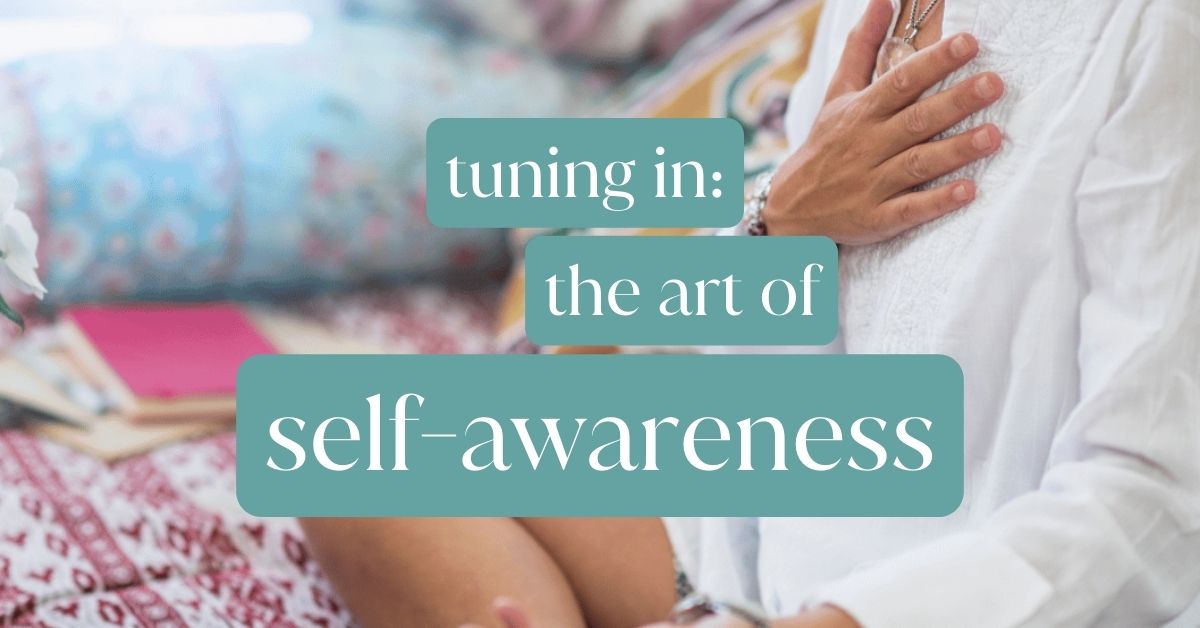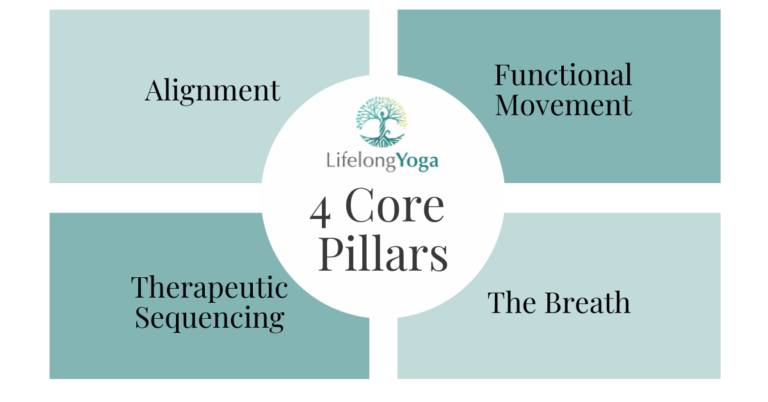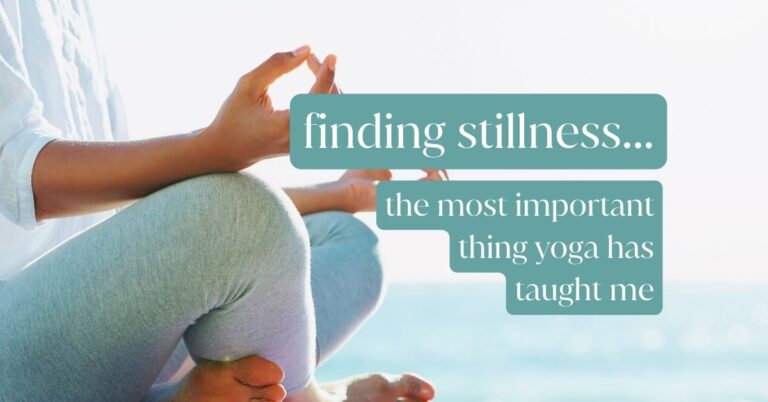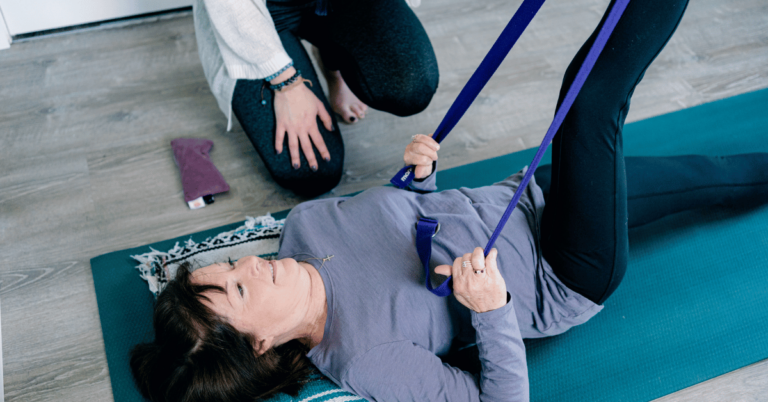Tuning In: The Art of Self-Awareness in Yoga

Have you ever wondered why we pause so often in our yoga classes? Why I ask you to “check in” with your body before we begin, during those moments of stillness between poses, and again at the end of our practice?
If you’ve been to my classes, you know what I’m talking about. We start by sitting quietly, eyes closed, taking a few deep breaths. I gently guide you to notice how your body feels, where you might be holding tension, what thoughts are running through your mind. Throughout the class, we return to this practice of pausing, observing, noticing.
This isn’t just a nice way to slow down or catch our breath (though it certainly helps with that too!). What we’re doing in these moments is cultivating one of the most powerful tools for our health and well-being: Self-awareness.
In yoga philosophy, this practice of awareness has a special name: svadhyaya, which means self-study or self-reflection. It’s about turning our attention inward and observing ourselves without judgment. This practice can be incredibly powerful when it comes to our physical and mental well-being.
As we cultivate this awareness, we might start to notice patterns in our body and mind. In yoga, these patterns are called samskaras. They’re the mental and physical habits we’ve developed over our lifetime. Some serve us well, while others… not so much!
The beauty of bringing awareness to these patterns is that once we see them clearly, we have the power to change them.
Let’s look at some common examples of how lack of awareness might be holding us back:
Physical habits:
- Unconsciously gripping your jaw throughout the day
- Habitually sucking in your belly (hello, core and pelvic floor tension!)
- Holding tension in your neck and shoulders while working
- Favoring one side of your body when standing or sitting
Thought patterns:
- Beating yourself up for not being as flexible as you used to be
- Comparing your yoga practice to others in class
- Jumping to worst-case scenarios when you feel a twinge in your back
- Holding onto the belief that “I’m just not good at balancing poses”
Once we start to notice these patterns, we gain the power to change them. It’s like turning on a light in a dark room – suddenly, we can see what’s been there all along.
As a yoga therapist, a significant part of my work involves guiding clients to develop this body-mind awareness.
For example, one of my clients had been struggling with persistent neck pain for years. Through our yoga therapy sessions, she realized she was unconsciously tensing her shoulders every time she got in her car to commute to work. Once she became aware of this habit, she could consciously relax and soften her shoulders and slow down her breath, leading to a reduction in her pain (and her stress) over time.
This might sound simple, and in many ways, it is. But in our fast-paced world, it’s all too easy to rush from one thing to the next without pausing to check in with ourselves. We tend to prioritize DOING over BEING, missing valuable cues from our body and mind in the process.
We tend to prioritize DOING over BEING, missing valuable cues from our body and mind in the process.
Mikah Horn
The beauty of cultivating awareness is that it doesn’t require extra time in your day—it’s about bringing quality attention to what you’re already doing. Whether you’re driving, working at your desk, or even watching TV, you can practice tuning in to your body and breath. These small moments of awareness can add up to significant changes in how you feel and move through your day.
Ready to start tuning in more often? Here are some simple (yet powerful) practices you can explore to cultivate greater self-awareness:
- Body scan: Take a few minutes each day to mentally scan your body from head to toe. Notice any areas of sensation. (Try it: A short body scan for releasing tension)
- Breath awareness: Your breath is a powerful tool for increasing body-mind awareness. Try setting reminders to check in with your breath throughout the day.
- Mindful movement: During your yoga practice or daily activities, focus on how each movement feels. Notice any habitual patterns or areas of resistance. (Try it: Mindful Morning Yoga)
- Journaling: Write down any physical sensations or thought patterns you observe. This can help you identify recurring themes.
- Pause and reflect: Before reacting to pain or discomfort, pause for a moment. Ask yourself: “What am I feeling? What thoughts are accompanying this sensation?”
Or simply practice taking a step back and observe yourself as a witness. Notice how you react when plans get changed. Acknowledge the way you hold yourself. Observe and question your actions.
Then you can begin to let go of what is no longer serving you.
As you develop this awareness, you might be surprised at how it affects other areas of your life. You may find yourself making more mindful choices about your diet, sleep habits, or even your relationships.
Remember, this is a journey, not a destination. Be patient and kind with yourself as you explore this new level of self-awareness. It’s not about perfection – it’s about progress, presence, and self-discovery.
“The more you know yourself, the more clarity there is. Self-knowledge has no end.”
Jiddu Krishnamurti
By cultivating body-mind awareness, you’re not just addressing symptoms – you’re getting to the root of what’s holding you back. And that, my friends, is the real key to vibrant, joyful living.
Have you noticed any unconscious habits in your own body or mind? I’d love to hear about your experiences in the comments below!







Did this blog bring up any thoughts? Questions? Leave me a reply here. Let’s make this a conversation. 🙂